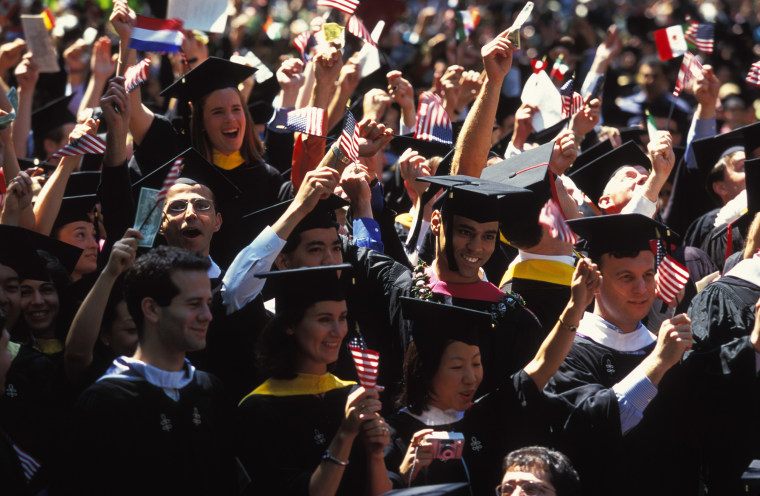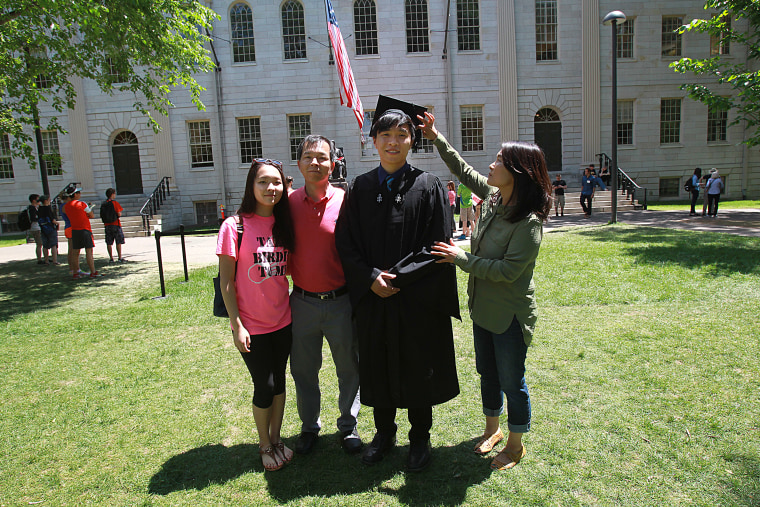There is a story about race-based college admissions that holds particular sway over Asian-American students like I once was — my father wrote away for my Harvard application before I was out of diapers. It’s backed up by some cherry-picked data and a conservative activist group that wants to end all affirmative action, and it goes something like this: Because of colleges’ consideration of diversity, Asian-American students have to be even smarter than the average white student in order to qualify for admission to the most competitive American universities.
But the issue hiding in plain sight is not how the elite admissions system keeps Asians out; it is more about how it is largely rigged to keep white students — who are often staggeringly underqualified — in, by any means necessary.
There’s reason enough to be suspicious of the intentions of the people pushing our community to take on affirmative action: The man behind the pending lawsuit against Harvard University, for instance, is Edward Blum, who, as the Texas Tribune reported, is the strategist behind the Texas affirmative action case and "the man who recruited Abigail Fisher."
There’s reason enough to be suspicious of the intentions of the people pushing our community to take on affirmative action.
Fisher, you may recall, was the complainant in the recent Supreme Court case challenging affirmative action at the University of Texas; the Supreme Court quickly came to the conclusion that Fisher's grades and scores were simply too low for her to have qualified for admission — an unwittingly perfect illustration of how race-based admissions generate controversy, while white mediocrity goes accepted and unchallenged.
While it is right to press Harvard to end any practice of denying admission to otherwise qualified Asian students based on racial quotas — which Harvard denies exists — websites like Harvardnotfair.org feature a lone, pensive Asian person and ask, ominously, “Were You denied admission to Harvard? It may be because you’re the wrong race.”
But before aggrieved students rush to sign up, it is time to take a breath.
Though Harvardnotfair.org (or UNCnotfair.org or Uwnotfair.org) all prominently feature sad-looking Asian-Americans, these are all Blum projects in service of white supremacy and not Asian-American equality. Just click through to the fine print: “HarvardnotFair.org is an undertaking by the Project on Fair Representation (POFR). Founded in 2005, POFR is a program of Project Liberty, Inc., a 501 (c) (3) public charity. Our mission is to support litigation that challenges racial and ethnic classifications and preferences in state and federal courts.”

Think about that. He seems to be willing to use anything — including Asians — to dismantle affirmative action.
There’s one study most commonly cited in service of the idea of "the Asian penalty" in admissions. Princeton sociologist Thomas Espenshade ran a demographic study using applicant data from the 1980s to the 1990s and found that Asians needed on average 140 SAT points higher than whites to arrive at the same probabilities of acceptance to highly competitive private colleges.
There are plenty of commonly cited critiques of his study, which even Espenshade admits didn’t take into account many of the non-numerical factors considered in admissions. And a 2015 Justice Department investigation into Princeton’s admissions practices, for instance, found that many students with stellar and even flawless academic records were denied admission because the competitiveness of the applicant pool precluded the admission of every student who qualified on the numbers alone.
But even if admissions processes took numbers more strongly into account, reparative increases of Asian-American admissions would need to come from subtracting the spots from underqualified whites, not from supposed affirmative action candidates — and that is clearly not the purpose of Blum’s suits.
Even if admissions processes took numbers more strongly into account, reparative increases of Asian American admissions would need to come from subtracting the spots from underqualified whites, not from supposed affirmative action candidates.
And even were they the purpose of Blum’s suits, Espenshade’s studies suggests that, at the most competitive colleges, underqualified white candidates can still rely on a host of longstanding admissions processes that favor them (and not any students of color) regardless of SAT scores.
Espenshade, for instance, also found that recruited athletes had a fourfold advantage in admissions with lower mean test scores. To be sure, athletes in the broadest sense are diverse. However, Harvard, for example, actively recruits for swimming, fencing, lacrosse, soccer, squash, water polo, skiing, sailing and crew — sports that highly favor the wealthy and white.
And then there is the admissions loophole that favors the children of alumni and large donors: A legacy applicant to an elite college is more than seven times more likely to gain admission than an ordinary applicant. After generations of admissions policies that favored white people or outright excluded nonwhite people, this would necessarily disproportionately benefit white applicants.
In an interview, Michael Dannenberg, director of Education Reform Now, points out that these policies "don't reward merit. ... In fact, they undermine both and are fundamentally unfair."
When the goal of ending affirmative action is not specifically to better Asian American's change of admission — and it never is — but to dismantle race-based protections for others in favor of white students, we don’t benefit.
And, in California, there is evidence that banning affirmative action doesn’t affect white and Asian-American students in equal measure, despite some cherry-picked statistics to the contrary: Proposition 209 banned affirmative action at the state's schools starting in 1998. Seeming to confirm the idea of Asian-American merit, enrollment of Asians indeed increased at the most competitive California schools, like Berkeley.
However, OiYan Poon, an assistant professor of higher education at Loyola University, took a deeper dive into the data and found that the rate of increased admissions of Asian-Americans actually declined from 16 percent growth to 6 percent growth; the reported increase in overall enrollment was "likely due to significant demographic shifts in the state and a higher yield rate among admitted Asian-American applicants."
In other words, even as the population of Asian-Americans in California exploded, the increase in the rate of admissions didn’t keep pace. This suggests that when the goal of ending affirmative action is not specifically to better Asian-Americans' chance of admission — and it never is — but to dismantle race-based protections for others in favor of white students, we don’t benefit.
Asian Americans need to resist the fallacies being sold to us.
Asian-Americans need to resist the fallacies being sold to us; I know from personal experience how attractive they are, given that I, too, was disappointed by my rejection from Harvard despite being class valedictorian, captain of a varsity athletic team and having well-above-average SAT scores, among other accomplishments that I’d hoped would make me a shoo-in. I'd heard rumors that it was my SAT scores, compared to other Asian-American students, that kept me out — and maybe, despite Harvard’s current denials in court, it was. Harvard's deployment of possible (illegal) quotas needs to be dealt with, but not via false allies who exploit legitimate grievances to maintain white mediocrity at the expense of qualified blacks, Latinos, Native Americans and, yes, Asian-Americans.
The people claiming they want "colorblind" admissions aren’t likely to welcome mass numbers of Asian-American classmates with open arms.
Marie Myung-Ok Lee teaches fiction at Columbia and has been published in The Atlantic, The New York Times, The Nation, The Guardian and The Paris Review, among others. She was born and raised in Hibbing, Minnesota, the same as Nobel laureate Bob Dylan.
